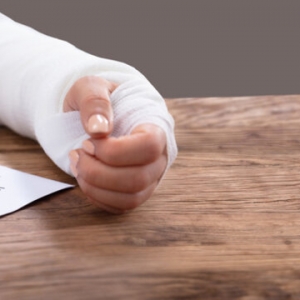
When pursuing a personal injury claim, one crucial factor that can significantly influence the outcome is the presence of pre-existing conditions. These conditions can complicate the case, potentially affecting the amount of compensation a claimant is entitled to receive. Understanding how pre-existing conditions impact personal injury claims is essential for anyone navigating this complex legal landscape.
For those facing such challenges, consulting with a seasoned attorney, such as those at The Michel Law, can provide invaluable guidance. Their expertise can help clarify how these conditions may affect your claim and assist in building a strong case.
A pre-existing condition refers to any medical condition that an individual had before the incident leading to the personal injury claim. These conditions can range from chronic illnesses, such as diabetes or arthritis, to past injuries that have not fully healed. Importantly, these conditions do not necessarily disqualify someone from filing a personal injury claim. However, they do introduce a layer of complexity.
One of the primary issues in personal injury claims involving pre-existing conditions is proving that the incident in question aggravated the pre-existing condition. The claimant must demonstrate a direct link between the injury sustained in the incident and the exacerbation of their pre-existing condition. This often requires detailed medical evidence and expert testimony. For instance, if an individual with a prior back injury is involved in a car accident and their back pain worsens, the claim will focus on establishing that the accident significantly aggravated the existing condition.
Pre-existing conditions can also affect the assessment of damages. Insurance companies and courts will consider the extent of the claimant's pre-existing condition when evaluating the severity of the new injuries and the overall impact on the claimant’s life. This means that the compensation awarded may be adjusted to reflect the claimant's medical history and the extent to which the new injuries have worsened their condition.
Defendants in personal injury cases often argue that the claimant's pre-existing condition contributed to the injury or worsened it beyond what would be expected. This argument is part of the defense's strategy to reduce liability. The burden is on the claimant to demonstrate that the defendant's actions were the primary cause of the injury and that the pre-existing condition played a lesser role.
In personal injury claims, the claimant bears the burden of proving that the defendant’s actions were the direct cause of their injury and that the pre-existing condition was not the sole cause. This requires substantial evidence, including medical records, expert opinions, and sometimes the testimony of medical professionals.
Many jurisdictions follow a comparative negligence rule, where the court assesses the degree of fault of each party involved. In cases with pre-existing conditions, the court will evaluate the extent to which the pre-existing condition contributed to the injuries. This can affect the percentage of fault attributed to each party and, consequently, the amount of damages awarded.
When dealing with pre-existing conditions in a personal injury claim, having a knowledgeable attorney is crucial. A personal injury lawyer from The Michel Law can help navigate the complexities involved. They can assist in gathering medical records, consulting with medical experts, and building a compelling case that clearly establishes the connection between the incident and the injury.
An essential part of handling pre-existing conditions is obtaining expert medical testimony. Medical experts can provide opinions on the extent to which the accident worsened the pre-existing condition. This expert testimony is critical in persuading the court of the causal link between the incident and the aggravation of the condition.
Insurance companies often use pre-existing conditions as grounds to minimize settlement offers. A skilled personal injury lawyer can negotiate effectively with insurance adjusters, ensuring that the settlement offered adequately compensates for all damages, including those exacerbated by pre-existing conditions.
Laws regarding pre-existing conditions can vary significantly by jurisdiction. A personal injury lawyer familiar with local laws and court procedures can provide tailored advice and representation, increasing the likelihood of a favorable outcome.
If you have a pre-existing condition and are pursuing a personal injury claim, consider the following steps:
Maintain comprehensive records of all medical treatments, diagnoses, and any changes in your condition following the incident. Detailed documentation will support your claim and demonstrate the impact of the incident on your pre-existing condition.
Consult with a personal injury lawyer who has experience with cases involving pre-existing conditions. Their expertise can help you understand your rights, gather necessary evidence, and develop a robust legal strategy.
Continuing regular medical care and following your healthcare provider's advice is crucial. Consistency in treatment not only aids your recovery but also strengthens your claim by showing that you are taking all necessary steps to mitigate your condition.
Pre-existing conditions can add a layer of complexity to personal injury claims, but they do not prevent individuals from seeking justice and fair compensation. Understanding how these conditions impact your claim and having the right legal support, such as that provided by The Michel Law, can significantly affect the outcome of your case. By working with experienced professionals and taking proactive steps, you can navigate the challenges posed by pre-existing conditions and pursue the compensation you deserve.
For more personalized advice and support, consulting with a dedicated personal injury lawyer is always recommended. They can provide the legal expertise needed to effectively address the complexities associated with pre-existing conditions in personal injury claims.